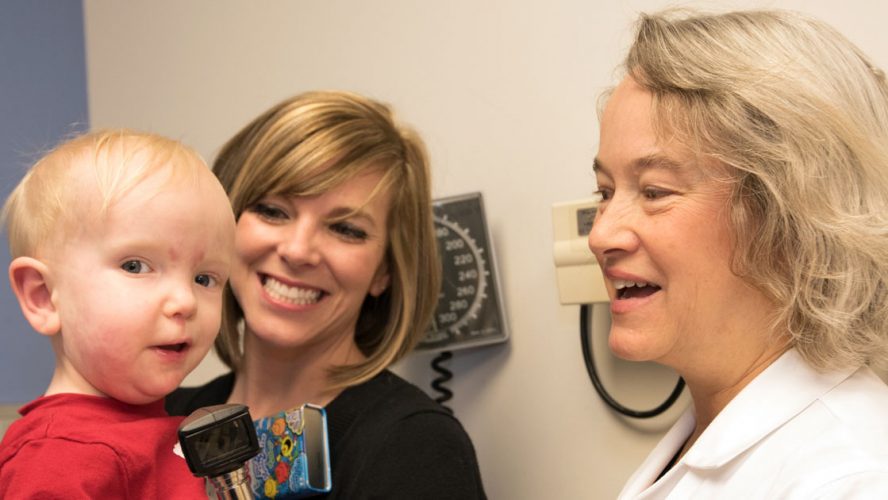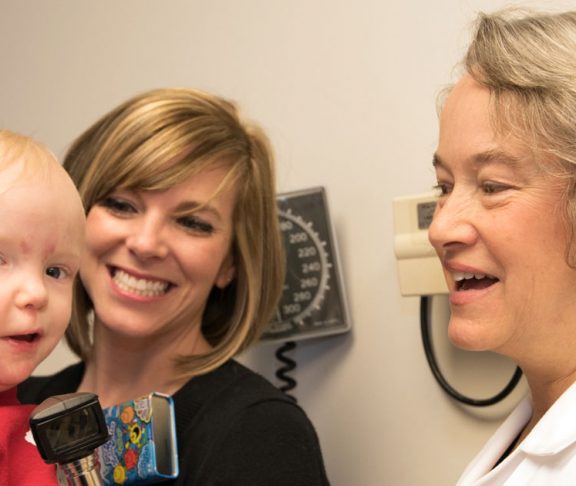Advancements in genetic testing are promising, and for rare diseases, patient education, coupled with the right laboratory test, are keys to diagnosis and management.
Rare, undiagnosed diseases often have a genetic basis, meaning they can affect multiple members of a family — but this is not always the case. For many types of unusual overgrowth conditions, the genetic changes are not inherited, but arise during development in a small number of cells. Over time, this results in overgrown fingers or toes, or perhaps one side of the body only, or a large or misshaped head.
“Even when a genetic basis is suspected, testing one gene, a group of genes, or even all the genes (using a clinical exome test) may not find the answer,” says Dr. Jonathan W. Heusel, M.D., Ph.D., chief medical officer of Genomics and Pathology Services (GPS) at Washington University School of Medicine. “These patients often have multiple rounds of tests before a diagnosis is established.”
There’s a name for this experience, says Cheryl Cytrynbaum, a genetic counselor at the Hospital for Sick Children in Toronto, Canada — “the ‘diagnostic odyssey,’ which can last months, years or even decades,” she explains. It can also be very expensive.
But there’s hope on the horizon. “New advances in genetic testing technologies provide an opportunity to expedite a diagnosis,” Cytrynbaum says.
Patients and their families play a critical role in avoiding the diagnostic odyssey, because arriving at the right diagnosis requires accurate clinical information — including family history — combined with the right test.
The future of genetic testing
The number of genetic testing options today is bewildering; from a single point mutation to an entire gene or group of genes, to karyotyping, chromosomal microarrays, to sequencing all the genes (exome) or the entire human genome (approximately 6 billion bases).
“These tests scan genetic code and chromosome structure looking for alterations that underlie the disease,” says Dr. Beth Drolet, medical director of the Birthmarks and Vascular Anomalies Center and chief experience officer at Children’s Hospital of Wisconsin in Wauwatosa. Results may better inform additional testing and can help identify better treatment, including so-called targeted therapies that exploit specific genetic mutations.
There’s no one-size-fits-all genetic test for all rare diseases. But a technical advancement, called next-generation DNA sequencing (NGS), is helping children affected by a rare disease of somatic overgrowth, Heusel says.
Somatic overgrowth often involves abnormal blood vessels that create unusual skin markings and a physical growth abnormality — often, one arm or leg, or toes and fingers that grow faster than the others, Drolet says. This reflects the involvement of only a subset of abnormally growing cells.
With a GPS test — called SOMA — NGS specialists can sequence and analyze DNA from the affected tissue to try to identify one of several dozen genes associated with the disease, Heusel says. “For these mosaic conditions, the assay must be very sensitive to detect the rare mutations present among a host of normal cells,” he explains. “Thus, how the test is built — the methods used — matters a great deal. It also explains why no single test can meet the diverse needs of all cases. Patients with inherited genetic diseases don’t need a test with this type of sensitivity; they are better served by a different type of genetic test.”
Why patient advocacy is key
For these unusual overgrowth conditions, like other rare diseases, getting the right genetic test, diagnosis and treatment often depends on the patient’s education, Drolet says. Thanks to information online, plus support groups and organizations committed to rare, orphan diseases, this public education is advancing rapidly.
“Savvy families can not only connect you to knowledge, but they can create knowledge,” Drolet says. “If there are 300 families across the world affected by the same disease who have gotten together, they’re going to pick up on trends that I never could caring for only five people.”
These families will also tell you that finding the right doctor is as important as using the right test — medical geneticists are trained to identify these rare conditions often missed by primary care visits.
Once these connections are made, the long diagnostic odyssey is avoided, and patients and families can move forward with the right information and the right treatment. “They know if other family members are at risk and need to be tested, and what things to expect down the line. Knowing the genetic cause allows their care team to manage all of the disease’s manifestations, since these disorders are multisystemic,” Heusel adds.
Altogether, new technology powering the right test, coupled with improving patient education and the right doctor, are making the diagnostic odyssey less common for those with overgrowth and other rare diseases.


